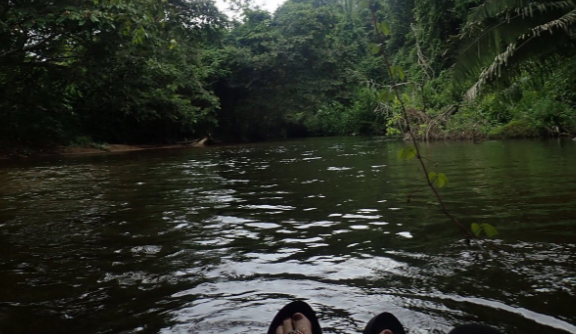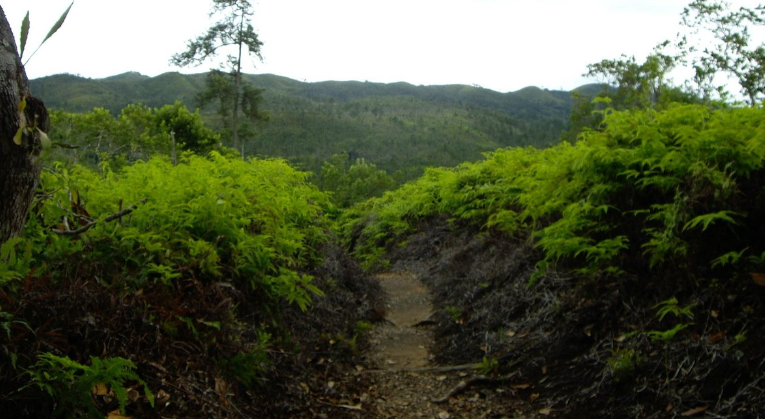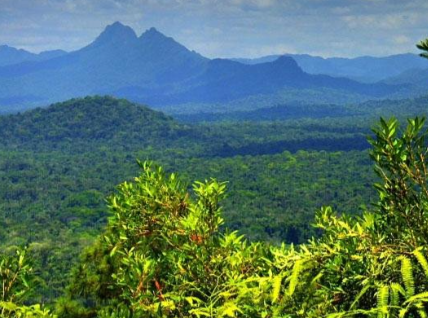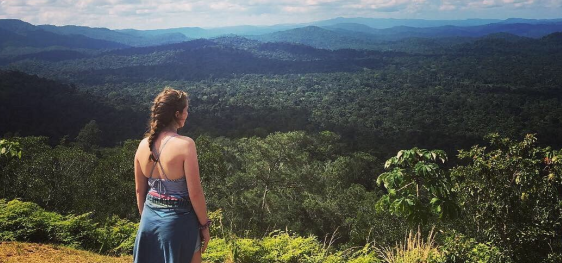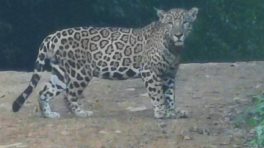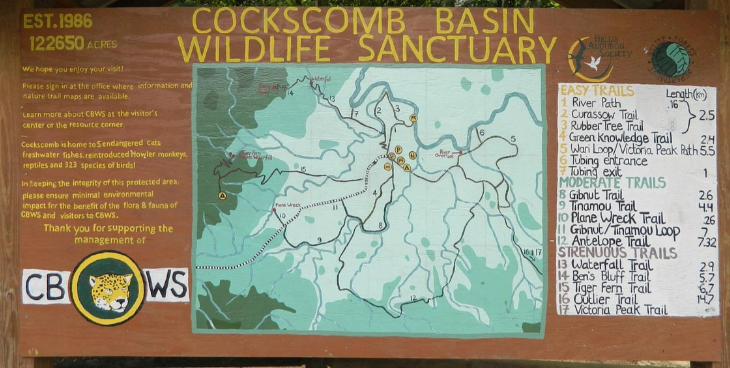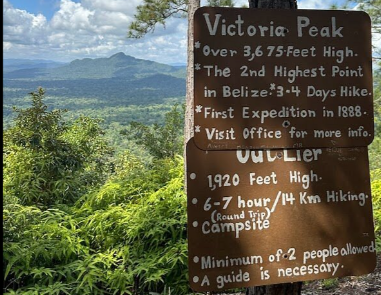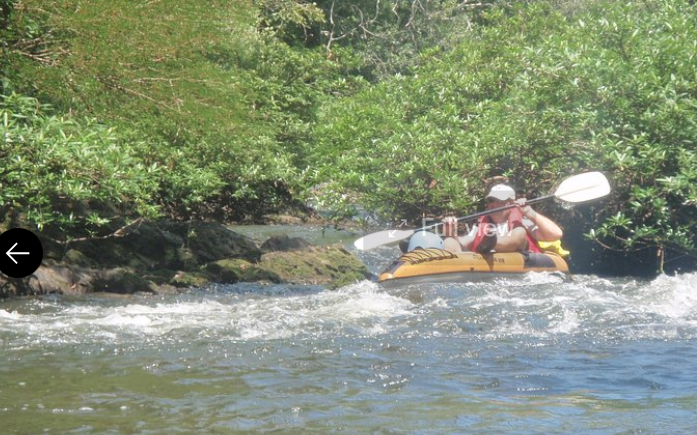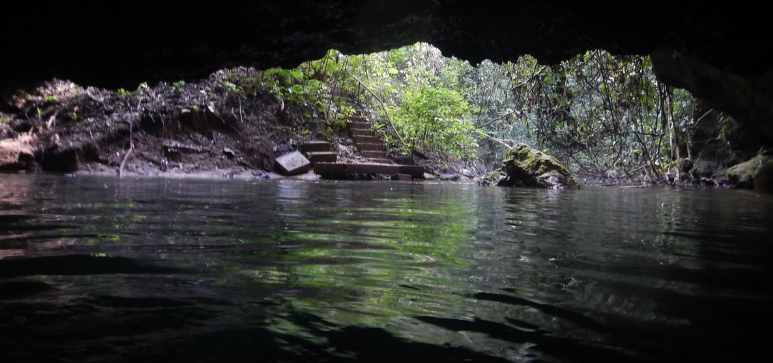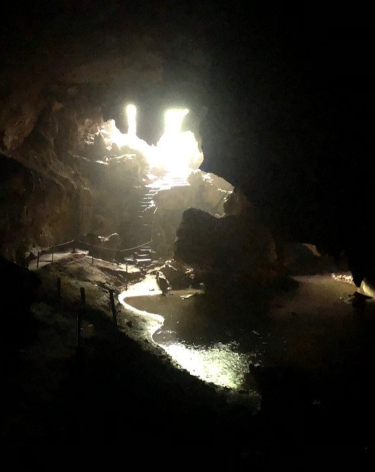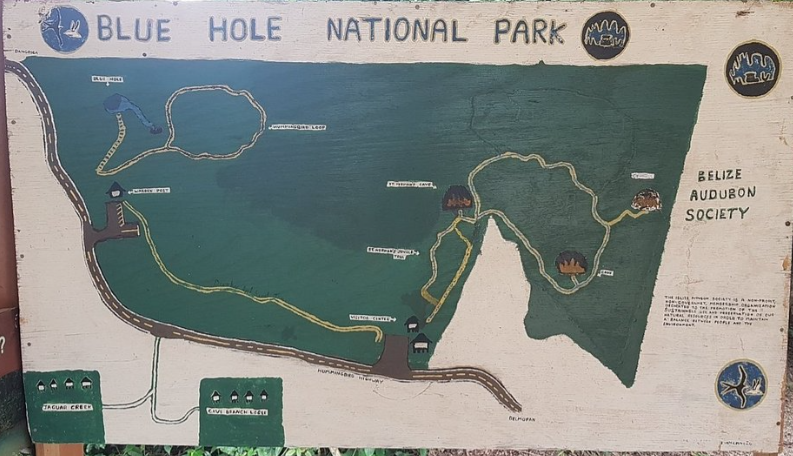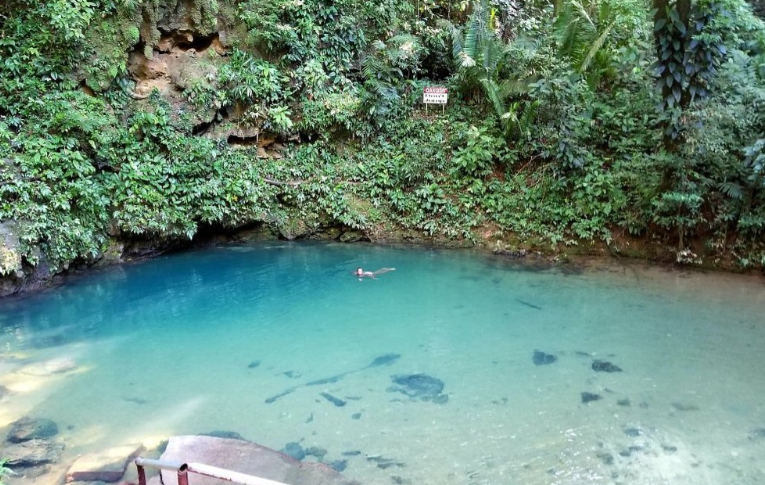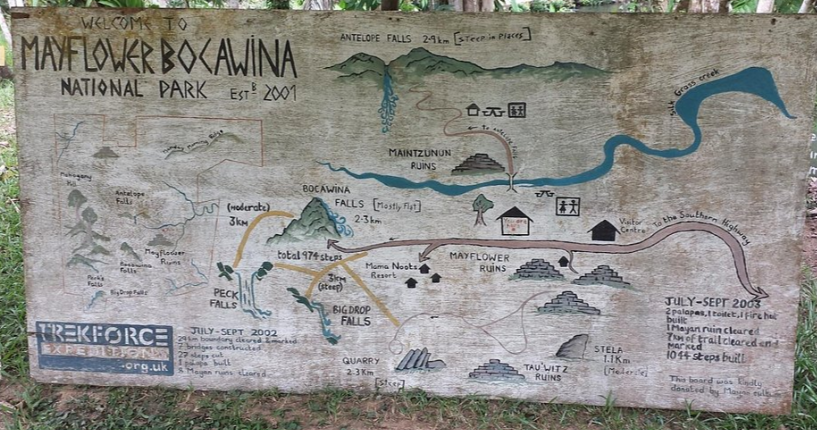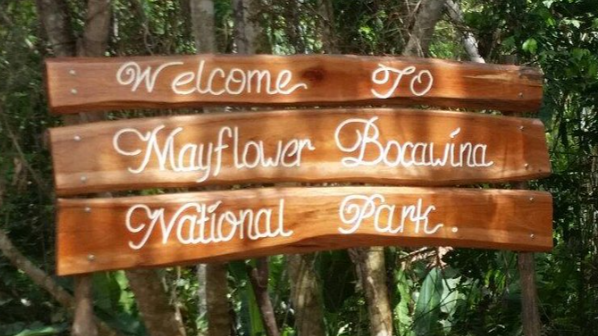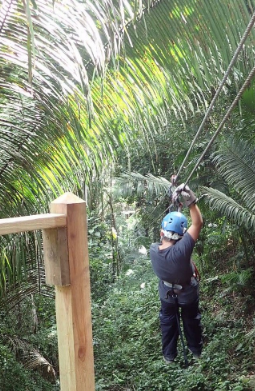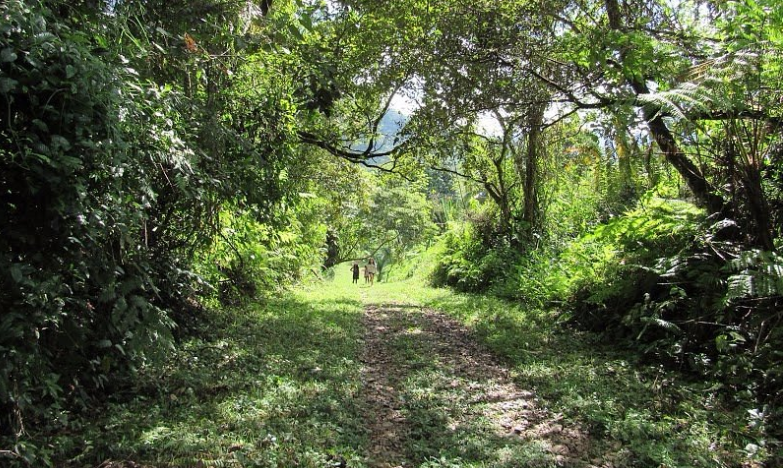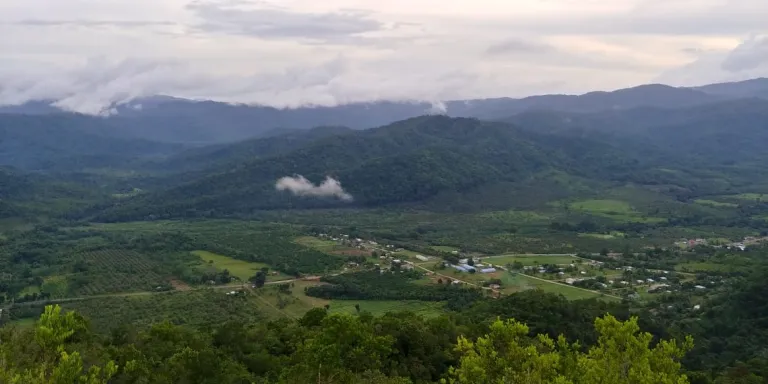
Table Of Content
Inland
1. COCKSCOMB BASIN WILDLIFE SANCTUARY AND JAGUAR PRESERVE

The Cockscomb Story
The Cockscomb Basin boasts a rich history. Mayan presence dates back over 12,000 years, while modern exploration began in 1888. Dr. Alan Rabinowitz's groundbreaking studies in the 1980s revealed a high jaguar density, leading to its protection as a wildlife sanctuary in 1986. The area has grown to encompass 128,000 acres, and a corridor connecting it to Bladen Nature Reserve creates a vast protected area.
What Makes It Unique
Named for the rooster-comb shaped Cockscomb Mountain ridge, whose distinctive silhouette is visible for miles on the horizon.
It's internationally recognized as one of the first jaguar preserves, playing a vital role in global jaguar conservation efforts.
Spotting jaguars is challenging due to their elusive, nocturnal nature, but footprints can sometimes be found on trails.
Beyond jaguars, the sanctuary safeguards crucial watersheds, river systems, and boasts Victoria Peak, Belize's second-highest mountain.
Fun Fact: Aiming to summit Belize's highest peak? Doyle's Delight, at 3,688 feet, beckons adventurous climbers. However, conquering this remote peak within the Cockscomb Basin Wildlife Sanctuary requires preparation and planning. Unlike some mountains, Doyle's Delight isn't easily accessible. It involves a challenging multi-day trek through dense jungle, often requiring a guide and potential camping.
The ancient Maya Mountains here hold some of Central America's oldest surface rock, dating back over 200 million years!
Unmissable Experiences
At the Cockscomb Basin Wildlife Sanctuary and Jaguar Reserve, you can explore the diverse rainforest by day and experience its transformation at night when nocturnal creatures emerge.
Take a refreshing dip in one of the sanctuary's picturesque waterfalls after a hike.
Keep an eye out for jaguar signs like tracks or markings on trails.
Consider joining a guided hike or tour to learn more about the area's rich ecology.
Distance From Placencia
1 hour 16 minutes drive
59 km
36.6 miles
2. ST. HERMAN'S BLUE HOLE NATIONAL PARK

The Sacred Cenote
For the ancient Maya, St. Herman's Cave, Mountain Cow Cave (also known as Crystal Cave), and the Blue Hole were portals to their underworld, Xibalba, where they performed rituals. Evidence of their ceremonies, possibly dating back hundreds of years, can still be seen in St. Herman's Cave. This significant site gained wider recognition in 1965.
Thanks to funding from the MacArthur Foundation, the area's caves and the inland "blue hole" (swimming hole) were protected as a national park in 1986. Originally named Blue Hole National Park, it was renamed in 2005 to avoid confusion with the famous Great Blue Hole offshore. The Belize Audubon Society now manages the park.
A Birder's Delight
St. Herman's Blue Hole National Park protects 575 acres of lush tropical rainforest, providing habitat for over 200 bird species, making it a paradise for birdwatchers.
While exploring the caves, learn about the Mayan history and significance of the area.
Experiences to Savor
Embark on a guided cave tour through St. Herman's Cave, suitable for beginners, to discover its Mayan roots and geological formations.
After your cave adventure, take a refreshing dip in the cool, blue waters of the inland Blue Hole.
With over 200 avian residents, keep your binoculars handy for some incredible birdwatching opportunities.
Distance From Placencia
2-hour drive
132 km
82 miles
3. MAYFLOWER BOCAWINA NATIONAL PARK

Secrets of the Ancient Maya
Mayflower Bocawina National Park, located off the Southern Highway just north of the Silk Grass Village, offers a unique adventure. Hike through lush rainforests, uncovering remnants of the ancient Maya civilization that flourished here.
Established in 2001 to protect the Mayflower archaeological complex, the park's mission has grown to encompass its rich biodiversity - waterfalls, native plants, and wildlife. Several well-maintained trails now wind through the park's over 7,000 acres, leading to hidden waterfalls with inviting swimming holes.
Deep within the jungle lie three ceremonial sites of the Mayflower Complex dating back to the Terminal Classic to Early Post Classic period (late 800s-early 900s AD) - Maintzunun, Mayflower, and T'au Witz.
This complex includes 11 structures like pyramids, a formal cluster, and two ancient aguadas (water reservoirs). Ongoing excavations have unearthed pottery shards, an effigy censer, and more, hinting at the significance of this Mayan civilization.
Incredible Highlights
The park prioritizes the sustainable management of the Freshwater Creek and North Stann Creek watersheds, benefitting local communities and preserving natural resources.
Two unexcavated Mayan temple mounds stand tall among other unexplored archeological remains, waiting to be unveiled. These ongoing discoveries have the potential to rewrite our understanding of Mayan history.
A dedicated team of park rangers maintains the trails.
An informative educational center features exhibits on Mayan history and the modern impacts on the region, including interactive displays for curious young minds.
Adventures Awaiting
Challenge yourself with the rewarding hike to Antelope Falls, capturing breathtaking views before plunging into the cool pool at its base.
For adrenaline seekers, there is waterfall rappelling or ziplining adventures through the lush rainforest canopy.
Keep your eyes peeled for colorful tropical birds and other wildlife as you explore the park's pristine trails.
Distance From Placencia
1 hour 18 minutes drive
70.4 km
43.7 miles
4. BILLY BARQUEDIER NATIONAL PARK

Named for a Champion
Billy Barquedier National Park is located between mile markers 16.5 and 19 on the Hummingbird Highway in the Stann Creek District. Nestled between the Mullins River and Stann Creek watersheds, it encompasses roughly 1,500 acres of conserved tropical evergreen forest. The park's name honors Billy Barquedier, a local champion who tirelessly advocated for protecting the area's unique habitat and endangered species.
A Diverse Ecosystem
While the park doesn't have extensive coastal lowlands or savannas, it boasts a rich tropical evergreen forest ecosystem.
Over 200 bird species have been documented here, including migratory birds and resident nesting colonies.
The park plays a vital role in protecting the critically endangered cantil tree orchid, found nowhere else on Earth.
Other wildlife thriving in the park include ocelots, peccaries, white-tailed deer, and coatimundis.
Unforgettable Experiences
Immerse yourself in the park's diverse birdlife with a guided birdwatching tour.
Explore the lush rainforest trails, encountering towering trees and vibrant flora.
Kayak or boat through the park's waterways, enjoying the tranquility of the mangrove-lined channels.
Fishing enthusiasts can try their luck at catching tarpon, snook, and bonefish in the nearby coastal areas (outside the park boundaries).
Distance From Placencia
1.5-hour drive
91.9 km
57.1 miles
5. RIO BLANCO NATIONAL PARK

Untamed Jewel of the Maya Mountains
Deep within Belize's Toledo District, near the Santa Cruz Maya community, lies Rio Blanco National Park. Encompassing a vast 107,000 acres, it's one of the largest remaining pristine broadleaf forests in Central America. The park's namesake, the Rio Blanco (White River), winds its way through this remote wilderness. Largely unexplored until the late 20th century, intrepid adventurers and scientists documented its incredible biodiversity, leading to its protection as a national park in 1994.
An Untamed Realm
Rio Blanco National Park safeguards a vast expanse of unspoiled broadleaf forest, a rare and valuable ecosystem in Central America.
Birdwatchers flock here to witness over 400 recorded avian species, including the resplendent quetzal.
The park provides crucial habitat for a diverse range of wildlife, including jaguars, tapirs, howler monkeys, toucans, and scarlet macaws.
Hidden within the dense rainforest lie ancient Maya ruins and artifacts, hinting at the forest's long human history. These sites hold the potential for exciting future archaeological discoveries.
Rio Blanco National Park forms a critical ecological corridor, connecting other protected areas across Belize.
Cascading waterfalls add to the park's beauty, offering opportunities for swimming and relaxation in a pristine natural setting.
Embracing the Wild
Explore the park's remote jungle trails with experienced guides, increasing your chances of spotting elusive wildlife in their natural habitat.
Join a guided birding tour to delve into the incredible diversity of over 400 bird species found here.
History buffs can visit archaeological sites like Lubaantun, remnants of bygone Maya cities, to learn about the region's past inhabitants.
For the truly adventurous, embark on an extended wilderness camping trek - an unforgettable experience for those prepared for the challenges of exploring this remote area.
Take a dip in the refreshing waters of the park's cascading waterfalls - a perfect way to cool off after a hike.
Nearby Places: Aguacaliente Wildlife Sanctuary, Uxbenka Archeological Site, Blue Creek Cave (Hokeb Ha), Agouti Cacao Farm, Lubaantun Archeological Site
Distance From Placencia
2.5 hours drive
156 km
97 miles
6. FIVE BLUES LAKE NATIONAL PARK

Brilliant Hues and Ancient Secrets
Just off the Hummingbird Highway in western Belize's Cayo District lies the 4,060-acre Five Blues Lake National Park. The park showcases five striking azure pools caused by dissolved limestone bedrock.
These pools vary in color from turquoise to sapphire depending on the sunlight, creating a breathtaking spectacle. Encompassing pine ridges, hills, marshes, and lakes, the park boasts diverse ecosystems rich in flora and fauna. Managed by the Belize Audubon Society with valuable support from the local Association of Friends, Five Blues Lake National Park has protected this unique environment since its establishment in 1997.
Natural Marvels and Maya Mysteries
The five blue pools are the park's crown jewels. Their brilliant hues shift from turquoise to sapphire depending on the sunlight's intensity.
Over 200 bird species call the park home, including many migratory visitors. Keep an eye out for these feathered residents as you explore the park's varied habitats.
Mammals like white-tailed deer, peccaries, ocelots, and gray foxes also roam this area.
History buffs will be fascinated by the remnants of ancient Maya civilization scattered throughout the park. Major Maya cities once thrived near these lakes over 1,000 years ago, hinting at the rich cultural heritage of the area.
Experiences to Reconnect
Hike along well-maintained trails, taking in the beauty of the blue pools and keeping an eye out for wildlife.
While swimming in the lakes seems inviting, be cautious - water depth and currents can vary. Consulting with a park guide is recommended before taking a dip.
To enhance your birdwatching experience, consider booking a tour with a local birding guide familiar with the park's over 200 avian residents.
Explore the park's archaeological sites and delve into the fascinating history of the ancient Maya people who once inhabited this land.
Distance From Placencia:
2-hour drive
123 km
76.5 miles
Caribbean Sea
7. LAUGHING BIRD CAYE NATIONAL PARK

Boobies and Frigates Galore
Laughing Bird Caye National Park, about 11 miles off the coast of Placencia, is a jewel within the Belize Barrier Reef Reserve System, a UNESCO World Heritage site. The park encompasses a series of islands, including Laughing Bird Caye itself, named after the Laughing Gulls that once nested there. Today, the star attraction is the incredible frigatebird colony with over 20,000 magnificent birds. Red-footed boobies, brown boobies, and roseate spoonbills also find sanctuary on these islands.
Island Sanctuary Highlights
This seemingly tiny park packs a punch! It protects two main islands (Laughing Bird Caye and Cat Caye) and several smaller ones, totaling over 4 square miles.
Scenic hiking trails weave across the islands, offering superb birdwatching opportunities and breathtaking panoramic views of the turquoise waters.
The surrounding coral reefs and walls boast vibrant marine life, making them a snorkeler's and diver's paradise. The park plays a crucial role in protecting this fragile ecosystem.
Natural Wonders to Experience
Take a guided boat tour from Placencia to witness the awe-inspiring frigatebird colony up close.
Embark on a snorkeling or scuba diving adventure to explore the vibrant coral reefs teeming with marine life around the cayes.
Hike across Laughing Bird Caye, taking in the panoramic vistas and colorful nesting booby birds.
Distance From Placencia
1-hour boat ride
17.7 km
11 miles
8. GREAT BLUE HOLE

An Underwater Marvel
One of the most visually stunning natural attractions in Belize is the Great Blue Hole, a massive 980-foot wide, 410-foot deep sinkhole off the coast near the center of Lighthouse Reef Atoll. This incredible underwater formation began as a limestone cave system around 15,000 years ago, during past ice ages when sea levels were much lower. As the oceans rose again over thousands of years, the cave flooded, transforming it into the deep, azure-colored wonder we see today.
The Vibrant Depths
The Great Blue Hole is part of the larger Belize Barrier Reef Reserve System, a UNESCO World Heritage site.
From the surface, its dark blue circular shape stands out dramatically against the lighter turquoise waters, creating a breathtaking contrast visible for miles.
Below the surface, divers and snorkelers explore stunning stalactites and a thriving marine habitat teeming with tropical fish, reef sharks, nurse sharks, and other marine life.
It's widely considered one of the premier scuba diving and snorkeling destinations in the world.
Awe-Inspiring Encounters
For an unforgettable perspective, take a small plane or helicopter tour and witness the Great Blue Hole from above.
Descend into the inky blue depths on a guided scuba dive to experience the incredible geological formations up close, including stalactites and remnants of the collapsed cave system.
After your Blue Hole adventure, head to nearby Half Moon Caye, a world-famous bird sanctuary teeming with red-footed booby colonies.
3-hour boat ride
125 km
76 miles










